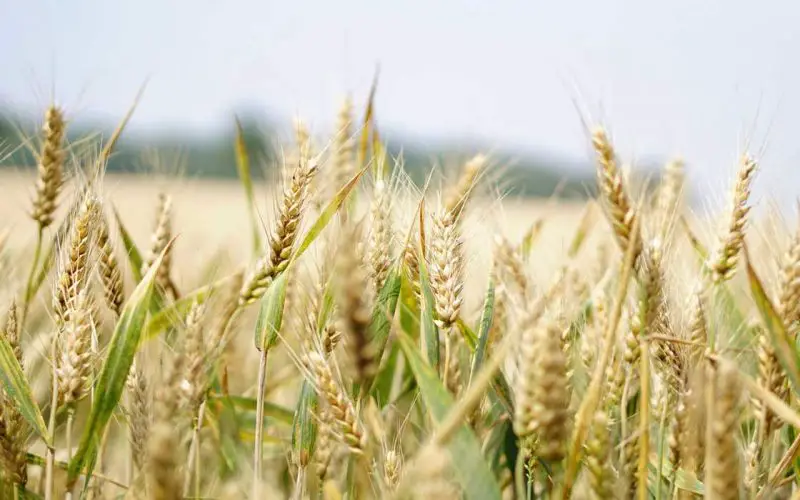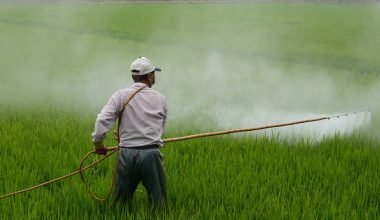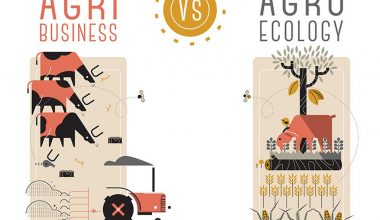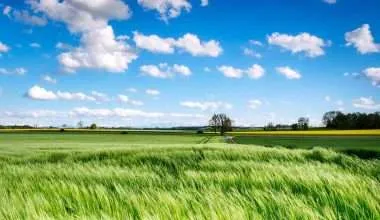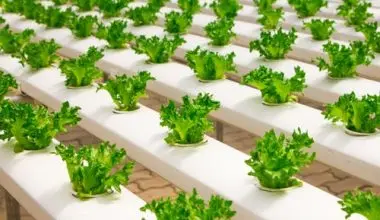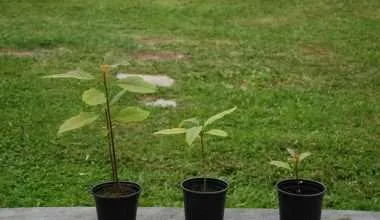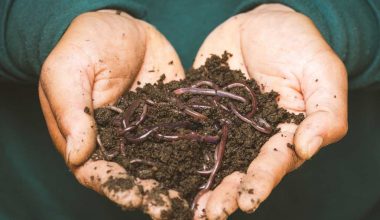Table of Contents Show
Farming has been the number one source of food for thousands of years now.
Agricultural methods and practices have constantly been refined and perfected over time to meet demands of the growing population. With increased world hunger, today’s food demand is higher than it’s ever been before.
Unfortunately, this pressure to fulfill demand leads to increase in pollution and destruction of natural environment.
There are various agriculture techniques available to modern farming. However, it is necessary that the techniques being adopted are not harmful to the environment and more importantly, sustainable.
Will sustainable farming really ensure continuous supply of food for all generations? Let’s find out!
Today we’ll be comparing conventional and sustainable farming. These are two broad classes of agriculture being employed in the modern world.
Navigation
What is Conventional Agriculture?
What is Sustainable Agriculture?
Conventional vs. Sustainable Agriculture
How is Sustainable Agriculture better in the modern world?
Will sustainable agriculture fulfill World’s food demand?
Brief History of Agriculture
Agriculture has played a major role in mankind development, ever since it began way back in 10,000 B.C. It allowed humans to manipulate ecosystems to maximize growth and bring food to the table.
In Colonial Period of American history (1607-1761), agriculture was the primary source of income for 90% of the population!
Agriculture, and the vast science behind it, has allowed people to live and permanently settle across the world. Once humans discovered the ability to plant seeds, the ability to explore potential agricultural lands grew immensely.
Selective breeding began to be implemented 10,000 years ago to produce desired characteristics. This allowed further increase in settlements around the world.
As farmers came to realize the negative impacts of farming throughout the year, especially exhaustion of nutrients, various new methods such as intercropping and crop rotation came into play to reduce such burdens.
Intercropping is still one of the most commonly implemented agricultural techniques being employed today, which helps to maintain soil composition, biodiversity, and plant health.
However, due to high rise in populations, drastic measures have been taken to ensure continuous supply of food. Many countries have now shifted towards a more conventional method of farming.
Other factors like economic instability, high poverty and avoiding shortage put more pressure on farmers to produce a much higher yield. This meant use of toxic chemicals and intensive farming techniques.
It may seem beneficial at the first glance. More food, Yay!
However, it is quite the opposite. Because to carry out such methods farmers became locked in a cycle of loans, debts, and subsidies to fulfill the greed of food industry.
What is Conventional Agriculture?
Conventional agriculture is a form of agriculture in which farmers utilize synthetic chemicals to grow and maintain their crops (usually genetically modified).
A high amount of chemical and energy input is put in to produce the highest possible yield from the crops when farmers are carrying out conventional agriculture.
The goal concerned with conventional agriculture is to maximize the potential crop yield as much as possible.
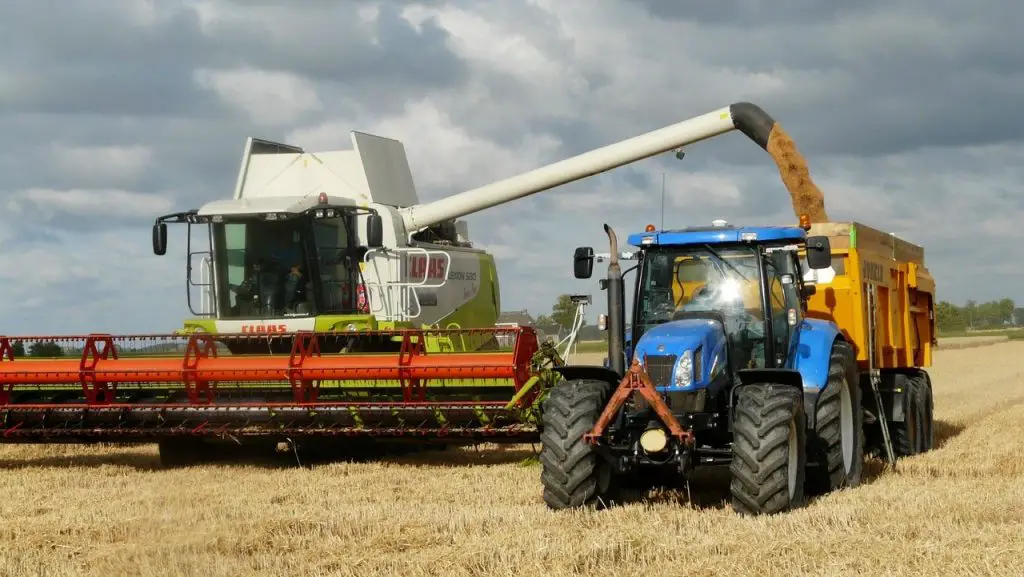
Sadly, to achieve these yields, environmental impact is not considered. This makes conventional agriculture particularly harmful.
What is Sustainable agriculture?
Sustainable farming represents the other extreme of agriculture.
It is a form of agriculture that aims to protect soils, ecosystems, and all living organisms. It has a higher reliance on ecological processes, biodiversity, and cycles of nature.
No external interventions. Period!
It is a holistic approach to agriculture with greater reliance on ecosystems and natural resilience to protect the farmland.
You should also read 10 Methods of Sustainable Agriculture to know what’s it all about!
What is the difference between conventional and sustainable agriculture?
| Conventional Farming | Sustainable Agriculture |
| Main goal: Best Yield and High Profit | Main goal: Sustainability (Secure Future) |
| Use of Agricultural Chemicals | No use of Agricultural Chemicals |
| High Environmental Damage | Low Environmental Damage |
| Use of GMO crops | No use of GMO ( like organic farming) |
| Promotes Monoculture (same crop throughout) | Promotes Poly-culture (variety of crops) |
| Reduced Biodiversity | High Biodiversity |
| High Yields | Lower Yields (Comparatively) |
| Reduced Soil Fertility | Good Soil Fertility |
| Soil Erosion | No Soil Erosion |
| Requires fertilizers | Crops naturally strong against pests and disease |
| High Farmer Debts | Low Farmer Debts |
| Better Maintenance (Reduced No. of Processes) | Difficult to Maintain (Many processes to keep track) |
| Easier | Relatively Difficult |
To give you a one-liner explanation, I’d like to put it this way.
Conventional farming is like burning both ends of the stick at the same time. It generates more heat (and energy) but burns out quicker.
The main objective of conventional farming across the world is to achieve the best possible yield from their land. For achieving that, farmers may choose to use various synthetic chemicals to create an artificially designed environment best for crop growth.
These agricultural chemicals are a source of land, water, and air pollution that cannot only be detrimental to the environment but to all living beings that may come in contact with it.
It also promotes use of genetically modified crops (GMO) that are modified to give higher yields.
You should also read up Pros and Cons of Applying Biotechnology in Agriculture.
Sustainable agriculture doesn’t employ the use of genetically modified species of crops, nor does it use any potential synthetic chemicals or fertilizers.
Sustainable farming aims for minimum environmental impact on the farmland, while maintain good yields.
In conventional agriculture, a farmer will use more commodity crops that are much easier to transport, don’t ripe early in storage and provide a variety of consumer and non-consumer products.
Commodity crops are known to be the most lucrative options available on the market.
Conventional farmers choose to grow specific commodity crops, Corn being one of the major examples in this practice.
By planting a single crop variety, farmers tend to make their work simple and efficient. Better farm management can be carried out with better maintenance and harvesting practices across the farmland.
This will allow for better planning for the future while investing in machinery and obtaining crop varieties better suited for the area.
What we are trying to convey here is that conventional agriculture is based on generating the maximum amount of profit. Sadly, this vision has a dark side to it. The farming method completely ignores the potential impact the approach may have on the environment.
This form of practice can generally lead to the loss of soil fertility and erosion.
Other than that, the land becomes devoid of nutrition due to intensive farming techniques carried out throughout the year. Intensive agriculture practices do not give enough time for the soil to replenish its nutrients.
Sustainable farmlands are rich with much more nutrients, as they get the necessary time to replenish their nutrients. It is important that there is an emphasis on a high nutrient level and biodiversity as these two factors will help to contribute to a healthy crop and farmland.
A better quality of soil is seen in sustainable agriculture. These practices generally have a lower burden on soil fertility. Soil management is vital for continued production of crops and sustainable farming is highly effective to prevent loss of soil fertility and soil erosion, both of which are common findings in conventional agriculture.
Biodiversity is important as it protects the plants from various pests and diseases. This isn’t seen in conventional agriculture as they practice monoculture (plant one or two crops throughout the field).
Higher biodiversity enhances the various ecological cycles’ performance that sustainable crops heavily rely on.
Yes, sustainable agriculture doesn’t make the same amount of yield products that conventional agriculture does nor can it match the production rate of conventional agriculture, but it sure makes up for these drawbacks by being sustainable.
This is beneficial because not only does it protect the land from various forms of pollution, but also aims to increase biodiversity.
Basic principles of sustainable agriculture
Sustainable agriculture can be characterized by
- Increased Biodiversity
- Preservation
- Integration of Farming Processes.
Sustainable agriculture promotes biodiversity of plants and animals on farmlands. Both, plants and animals, on a sustainable farmland are interconnected to the point that sometimes you don’t need to do anything!
Look at it this way; fertile lands and animals have always worked in harmony to promote biodiversity and ensure sustainability. That’s basically the reason why we still have fertile farmlands.
One of the major benefits of sustainable farming is that a bio-diverse system is healthy and resistant against pests and diseases. Bio-diverse species are much more adaptive changes in climate and temperature than monoculture species.
They find ways to utilize nutrients efficiently and thereby prevent soil depletion.
A Part of produce from sustainable farming is actually planted to replenish agricultural land. Such plants include Soybean, Peanut and Clover which fix nitrogen into the soil. This helps to fill the soil with organic matter and improve nutritional cycles.
The sustainable farm works towards achieving a balance between using resources and allowing them to replenish themselves; all the while maintaining food supply.
How is Sustainable Agriculture better in Modern World?
There are a few reasons why people should start adopting sustainable agriculture. Let me discuss some of those reasons of how it beats conventional agriculture. Then you can decide and tell me what you think.
Resources
Sustainable agriculture uses resources with better efficiency and tries to conserve (save) as much as possible.
It aims to build up organic soil matter through various farming methods like green manure, compost application, and no-tillage. This makes the soil naturally enriched. As a result, farmers don’t have to use a high amount of fertilizers on their lands.
The soil organic matter aims to provide nutrients to crops, improve soil quality, enhance microbial growth and promote water retention. Improvement in water retention helps to make crops more resistant to droughts, producing higher yields in low water conditions.
Energy
There is an aim to reduce the farmer’s dependency on external inputs (fossil fuels) when carrying out sustainable agriculture. The system is created in such a way so most of energy on the farm is recycled.
These farms are highly diverse with interconnected production units, crop residues or harvest leftovers go to feed the farm’s livestock.
This reduces the need to import feed for livestock and promotes manure production on the farm. The cycle of energy continues once the manure is used as a fertilizer on the land to grow crops once again.
Sustainable agriculture also fares better in terms of fossil fuels. This is because conventional farming is mostly based on machinery which uses insanely high amount of fossil fuels.
Even fertilizer production requires fossil fuels. You won’t believe it but fertilizer production makes up for more than 50% of all energy used in conventional agriculture.
PS: Fossil fuels are limited non-renewable resources so we shouldn’t depend on them so much.
Environment
Conventional farms require hundreds of acres of land to drive maximum profits. Environmental impact is the least of their worry. These lands are made available by clearing out forests.
Around one-third of all forests in the world have been removed since 2001, mainly for agricultural activities.
Deforestation at such large scale destroys ecosystems, modifies creeks for water supply, dries out ground water and drains wetlands.
In long-term, conventional agriculture has triggered numerous negative effects around the world. Effects that have been detrimental to human lives as well like
- Pollution (Air, water and Land)
- Greenhouse gas emissions and Global warming
- Drinking water contaminated with Pesticides
- Nutrient Pollution
- Eutrophication and Dead zones in nearby rivers
- Floods and Droughts due to changes in natural water streams
- Reduced pollination and reduced biodiversity
- Soil erosion
Imagine the damage!
Sustainable agriculture can fulfill world’s demand without harming the environment.
They help restore degraded lands once left behind by farmers as they were infertile. Degraded agricultural lands are recovered by use of methods like composting and crop rotation.
An achievement in sustainable agriculture was when Ethiopian government recovered 390,000 hectares of degraded agricultural land. They did this with crop rotation, terracing the hills and introducing permanent ‘green cover’ of the land.
Iowa State University held a 7-year long experiment to observe the benefits of sustainable farming. The experiment was located in U.S Corn Belt, one of the most intensively-farmed areas in the region. They compared sustainable farming practices to conventional farming methods of growing corn and soybean (in monoculture farming).
From 2008-2015, after 4 crop rotations, the results were as follows:
- Both crops had higher yields! Corn yield increased by 3% per acre and Soybean increased by more than 10 percent.
- Reduced Soil Erosion
- Requirement of Nitrogen Fertilizers fell by 90%
- Requirement of Herbicide fell by 50% (90% reduction in run off)
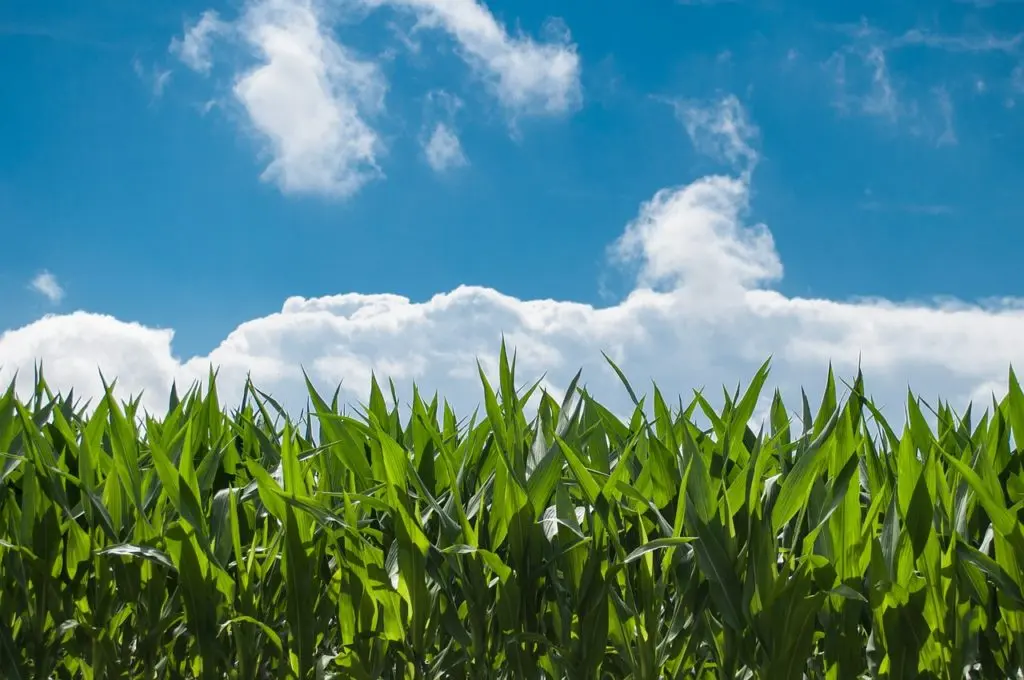
Sustainable farming has greatly improved biodiversity on various farms as well. They’ve achieved this by carrying out agroforestry, improved water retention and application of soil conservation measures like no-till or cover crops.
This practice proves that world’s food demand can be fulfilled without harming the environment, preventing further destruction of our ecosystems.
Resilience to Climate Change
As I told you, farmers focus on one or two crops at most. Due to this, conventional farms have a great disadvantage when it comes to climate resilience.
Reduced biodiversity means that if there is harvest loss, drought or pest attack; farmers will lost almost all of the harvest.
As we were just talking about Iowa State University experiment, I’ll tell you about another one.
Research showed that if it rained more in spring, there would be 30% loss of corn yield in U.S Corn Belt. This is actually very bad news. Because the climate change model there predicts increase in spring rainfall in the future.
On the other hand; sustainable farming has a better ability to withstand stress events related to climate change. This is especially true because of heightened biodiversity and soil quality.
Soils rich in organic matter absorb water like a sponge. Ability to store water for extended periods of time makes the farm resistant to droughts. Organic soils tested in Switzerland were found to have 40% higher ability of water-holding capacity.
Sustainable agriculture employs smart methods of rainwater harvesting. Ponds are created on farmland to collect and store rainwater, mainly to prepare for drought seasons.
Some may even make wetlands on their farms, further improving water management on the farm and the surrounding.
Diverse species have greater adaptability towards climate change and higher resistance to pest damage. Climate change is also known to alter pest lifecycles to make them more vicious. Higher biodiversity greatly protects from new infestation. If it was a conventional farm, it would’ve been wiped out!
Additional benefits of sustainable agriculture are its ability to store carbon. Soil and perennial vegetation can be found on such marks, serving as a natural sink helping to offset the greenhouse effect, potentially mitigating climate change.
Food
Conventional farming practices have given farming an industrial cover. The goal of agriculture to provide food to the table has been changed. It has now become a business tool to power global economy.
An example of a simple crop turned into profit-driven tool is corn. Corn is the most-grown crop of United States with acreage as large as 100 million acres! Farmers love growing corn on their farms because it brings high yields.
It would’ve been understandable if those yields were used to feed us. That’s not it. 40% of the corn is used for producing ethanol as biofuels, 35% gets mixed into livestock feed and the rest of it either gets exported or used in making corn syrup.
Local people who live around those farms do not get access to that corn because hundreds and hundreds of acres around are being solely exported.
One of the key differences when it comes to sustainable farming is that it helps to improve livelihood of rural populations by enabling small farmers to grow and supply locally sourced food that is safe, diverse, and filled with nutrients, and at the same time maintain good farm health.
The key principles of sustainable farming is that food grown is used by local people, making it a direct and least wasteful way of managing excess harvest. This localized approach helps to develop respect for the land and improves management of resources.
PS: Lower greenhouse gases because of local transport only.
Will sustainable agriculture fulfill World’s food demand?
Our agriculture system is working as hard as it can! Farmers working day in-day out, farming machines working to their maximum and agricultural chemicals are being used at highest concentrations, all to ensure maximum yields.
Conventional farming really drains the soil quality and does it quicker than the land can recuperate. This, much like non-renewable energy resources, cannot go on longer.
Sustainable agriculture is already proving to become a capable source of food for the growing population. It offers a combination of methods that help in soil regeneration, water retention, energy-saving methods, and a greater diversity of nutrients for consumption.
Farmers have the freedom to select the right crop; they can make a choice that fulfills their needs as well as needs of the local community. If done properly, these processes can be up-scaled without increased use of resources or installing expensive equipment. This opens up luxurious income possibilities for small farmers.
It will help to solve rising poverty levels seen on the countryside, especially where most villagers are dependent on farming as their source of income. The money can be then used to buy more diverse, nutritious food to provide a better standard of living for their family.
Sustainable farming has the power to connect people by providing basic nutritional needs to the community and secure their food supply in times of difficulty without making a compromise on the land’s future capacity of producing food.
The principles of sustainable farming are concerned with being economically viable for farmers and key to strengthening communities without harming the environment. These fundamentals should be sufficient enough to sustain the growing population in years to come by.
